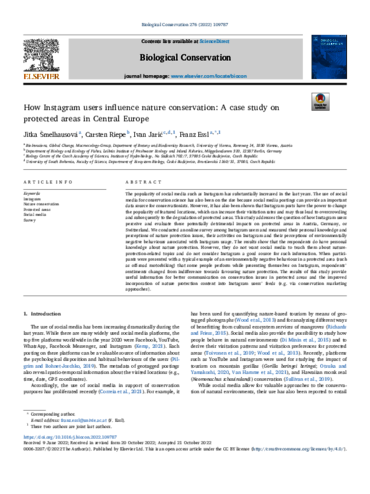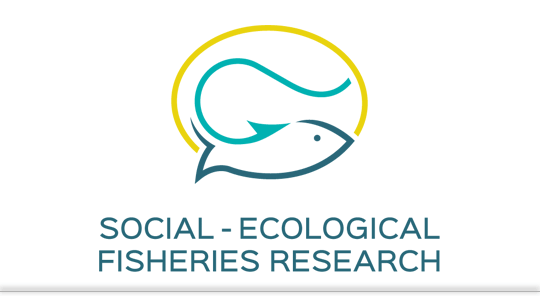The popularity of social media such as Instagram has substantially increased in the last years. The use of social media for conservation science has also been on the rise because social media postings can provide an important data source for conservationists. However, it has also been shown that Instagram posts have the power to change the popularity of featured locations, which can increase their visitation rates and may thus lead to overcrowding and subsequently to the degradation of protected areas. This study addresses the question of how Instagram users perceive and evaluate these potentially detrimental impacts on protected areas in Austria, Germany, or Switzerland. We conducted an online survey among Instagram users and measured their personal knowledge and perceptions of nature protection issues, their activities on Instagram and their perceptions of environmentally negative behaviours associated with Instagram usage. The results show that the respondents do have personal knowledge about nature protection. However, they do not want social media to teach them about natureprotection related topics and do not consider Instagram a good source for such information. When participants were presented with a typical example of an environmentally negative behaviour in a protected area (such as off-road motorbiking) that some people perform while presenting themselves on Instagram, respondents’ sentiments changed from indifference towards favouring nature protection. The results of this study provide useful information for better communication on conservation issues in protected areas and the improved incorporation of nature protection content into Instagram users’ feeds (e.g. via conservation marketing approaches).
How Instagram users influence nature conservation: A case study on protected areas in Central Europe
Peer-reviewed

Šmelhausová, J., Riepe, C., Jarić, I., Essl, F. 2022. How Instagram users influence nature conservation: A case study on protected areas in Central Europe. Biological Conservation, 276, 1-15.
Published
: 2022
Appeared in
: Biological Conservation, 276, 1-15
